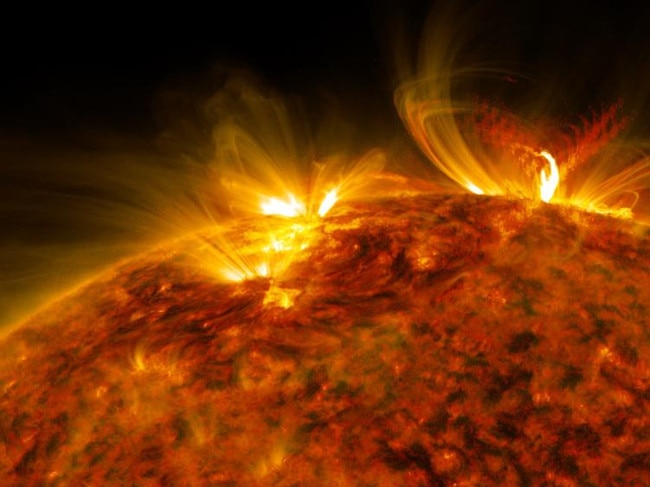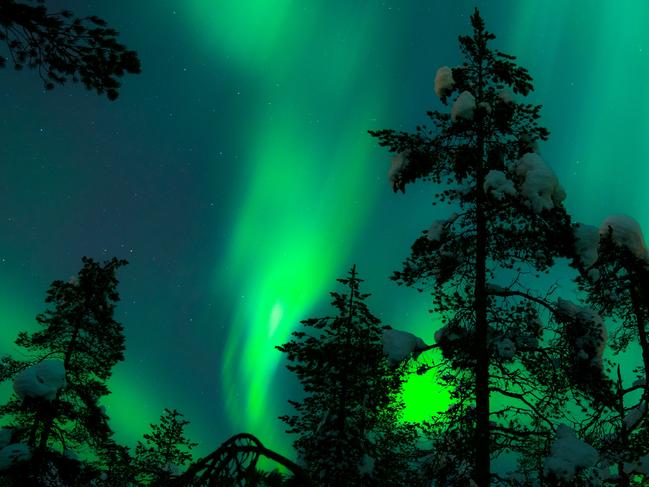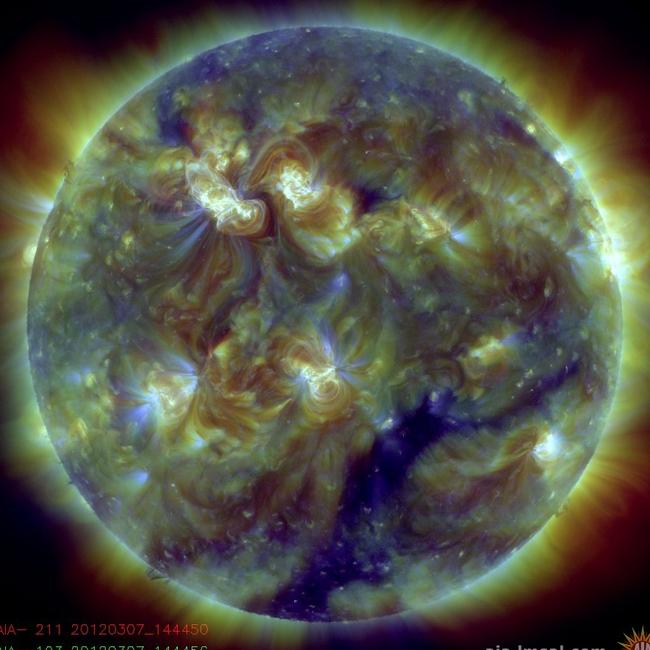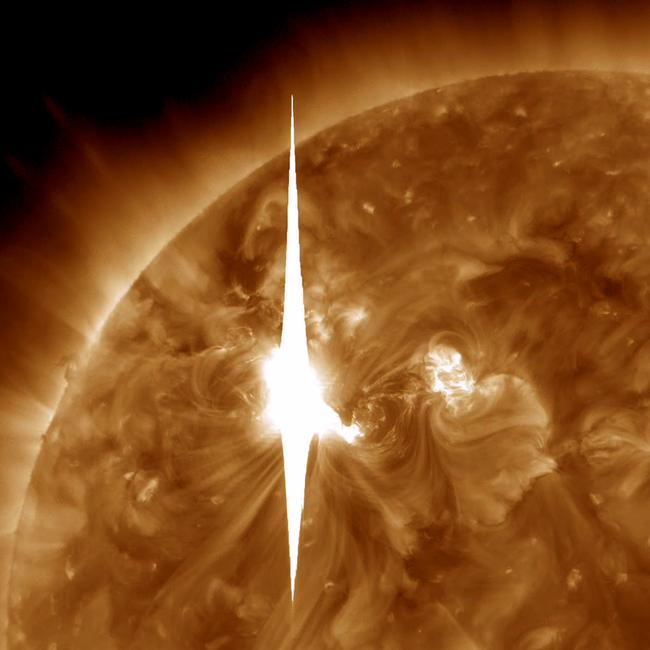Earth’s nine-day near miss in 2012 showed us how vulnerable we are
Don’t worry about asteroids hitting earth – well, not too much. The greatest potential threat to our modern, digitally driven, satellite-connected world lurks much closer.

It was Earth’s narrowest escape. Ten years ago this month, perhaps the biggest solar eruption we’ve known blasted a fiery storm of X and UV rays into our path – that predictable route we take orbiting the sun.
Lucky for us, Earth was 239 million kilometres short of the appointment. That sounds quite a distance until you consider we are travelling at 30km a second. We have moved about 400kms since you started reading this.
We missed that eruption of deadly particles by nine days as it arced through the solar system, but it was picked up by one of NASA’s two seldom-reported Solar Terrestrial Relations Observatory satellites launched six years earlier in 2006 to monitor just such activity.
They have enabled us not only to see the sun from both sides simultaneously, but to record the solar flares and more damaging coronal mass ejections that have the potential to cause great destruction on our planet.

The damage the coronal mass ejection in July 2012 might have done to Earth is almost incalculable. Some scientists believe it could have set civilisation back more than 100 years. That the internet would have failed is one thing, but that would not have been the worst of our problems. Modern power grids and electrically pumped city sewerage networks would have failed, along with missile systems and radio communications. America’s National Academy of Sciences estimates it could have cost the US alone up to $US3 trillion – much more than the total value of Australia’s economy.
A solar flare last week launched a plasma blast towards Earth that began arriving on Thursday. As with most of them, no one was hurt, but it may have inconvenienced us by disrupting the performance of satellites and the electrical relay systems on which most of the world relies. And they often mess with radio communications.
But it delivered a bonus: as the flare ionised the upper atmosphere, it caused potent polar auroras for those lucky enough to be in the vicinity. A more muscular flare in 1989 – intense enough that the northern lights (aurora borealis) could be seen as far south as the Gulf of Mexico – knocked out electrical systems, including Quebec’s vast hydro-electricity generating system, which relays power across 35,000km of poles and wires to more than 500 substations. New York and New England power plants were also affected.

As far away as Namibia, the Australian Army peacekeeping force’s high-frequency radio communications were reportedly interrupted for weeks. The year 1989 was the closing chapter of what may one day be labelled the First Cold War, and both Cubans and Americans in southern states thought the pink illumination might have been the glow from a nuclear weapons attack. As in 2012, the 1989 solar flare had been preceded, days earlier, by another that paved the way for the later, stronger blast.
The sun goes through periods of explosive magnetic activity known as solar cycles. They have been observed for 350 years, but were recorded and codified with any accuracy only from the mid-19th century. By then, sun spots had long been observed and increasingly their behaviour was seen as indicative of solar flares. This research also revealed another oddity of the sun: unlike Earth which, other than its molten liquid outer core, is a solid mass and rotates at an even speed, the sun – all gassy plasma – rotates unevenly, spinning like the clappers at its equator with a rotation every 27 days, but taking 35 days to turn at its poles. It all adds to the sun’s fitful nature.
Cambridge-educated astronomer Richard Carrington keenly observed the solar system, recording the planets’ varied movements and the relationships between them – although this work was interrupted when his father died and he had to run the family’s business, London’s Royal Brewery. He returned to his study just in time to witness what is called the Carrington Event on September 1, 1859. Solar activity had picked up intensity about three days before, culminating in a five-minute rush of activity that coalesced into a magnetic storm like that we dodged in 2012, and believed to have been almost as strong.

Back then, the world had only crude telegraphic communications systems – rightly called wires; that’s what they travelled along. That year’s colossal coronal mass ejection – there were probably two, one immediately preceding, and clearing a way for the other – sped to Earth, covering 150 million kilometres in fewer than 18 hours. The usually polar auroras appeared above the tropics – and were reported in Queensland. It knocked out many of the electrical and communications systems, such as they were, and even started fires. It confirmed for Carrington what he suspected: geomagnetic storms in the Earth’s atmosphere were the sun’s doing.
The correlations were further observed and each series given a solar cycle number. The Carrington Event occurred at the peak of solar cycle 10. The lucky escape of 2012 was at the apex of solar cycle 24. The following cycle started in November 2019.
Solar flares are unpredictable, but there is some consistency to their cycles, which arrive on average 11 years apart.
And, while they are less feared than killer asteroids, they are much more likely to damage us. The government’s Geoscience Australia warns of the chances of an extreme geomagnetic storm: “It is almost inevitable that one will occur eventually. Geomagnetic storms the size of the 1989 one occur roughly once every 50 years, while storms with the magnitude of the Carrington Event can be expected to occur once every 150 years or so.” Our modern, digitally driven, satellite-connected world would be crippled, possibly for years, if we saw another event the magnitude of Carrington’s – or greater.

And the bad news is that such an event, on a vastly greater scale, did take place – in the years 774-775. It was first identified in 2012 in the analysis of carbon-14 found in the rings of some ancient Japanese cedars and it correlated with the examination of trees in Russia and New Zealand, and evidence from Antarctic ice cores.
In 774, above the Anglo-Saxon kingdom of Northumbria, a wine-red “cross” was seen in the skies, which the locals saw as a message from God. About that time uniquely violent thunderstorms and white vapour trails were recorded in China.
Something of unimagined potency happened then – not that we should tailor the clues of it to fit the contours of our imaginations. But it won’t be our imaginations that are challenged if the sun one day strikes out with frightful – but probably not unique – force.




To join the conversation, please log in. Don't have an account? Register
Join the conversation, you are commenting as Logout